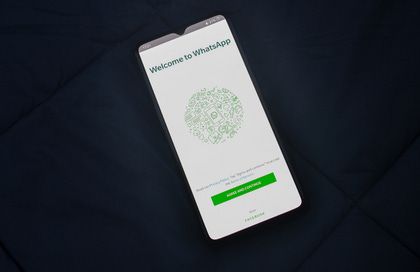There are lots of things that we consider safe and acceptable for adults that we just don’t for kids. Certain rides at the amusement park have height restrictions, because small children can’t be strapped in safely. Certain movies are rated R, because violent or sexual content is inappropriate for younger audiences. And certain products, like alcohol or tobacco, have age restrictions because they’re dangerous for kids.
Some safety hazards are easy to spot and easy to childproof. Others aren’t quite as obvious—like the dangers posed by some tech platforms. Recently, WhatsApp announced that users will have the option to delete messages up to two days after they send them. Users on the platform already had the option to send disappearing messages, and according to the company, these features are meant to make your digital messages less permanent and reduce your digital footprint. While this might sound good for adults, it’s actually just another feature that makes WhatsApp dangerous for kids.
The Meta-owned messaging platform has an estimated 2.44 billion unique active users worldwide and it does not really enforce the 13+ age rating in a meaningful way. It’s another one of those tech platforms that’s technically not for children—but many children use regardless. And a few of its features pose very real dangers for children. Things like end-to-end encryption and disappearing messages might not seem like obvious safety threats—and they aren’t all that dangerous for adults. But when kids are involved, it’s a different story. End-to-end encryption means that no one, not even WhatsApp or law enforcement can see the content of any messages shared on the platform. And deleted messages make it even easier to obscure or erase inappropriate exchanges. All this creates the ideal digital setting for anyone who wants to behave badly online—and hide their bad behavior from parents or law enforcement. It makes it even harder for parents to spot cyberbullying, or worse—online grooming.
When we created Kinzoo Messenger, we worked with leading online safety consultants, and they advised us against end-to-end encryption for this very reason. While this can be a nice feature for adults in many circumstances, it comes with tradeoffs: you can’t moderate encrypted content and you can’t review it when it’s reported. It’s crucial that we empower kids to report online content that makes them uncomfortable. We can’t give them platforms where bad actors can delete their conversation histories to hide what they’re doing. And, we can’t create dark, impenetrable corners of the internet when our children are involved.
Creating safe platforms for kids is all that much more urgent right now since online child sexual abuse is at record levels. We know that there’s real danger out there—which is a frightening thing for parents. But, don’t despair: there are things we can do to protect our children online. And, that starts with giving them access to platforms that are designed from the ground up for safety.
A deeper dive
Here are a few helpful resources in case you want to really dig into today's topic:
When WhatsApp introduced its disappearing messages feature, it framed the update as a way to make your digital interactions more like your in-person interactions: impermanent. Again, that might be okay for adults, but for kids, it’s a different story.
For a more in-depth look at encryption and how it affects kids’ online safety, check out this article from Internet Matters. As they explain, “Police and other child safety advocates worry that encryption creates a digital hiding place for sexual predators. If they can hide behind encrypted messaging, it is argued, they could share sexual abuse images with other predators and go unnoticed.”
TL;DR
Too long; didn't read. It shouldn't be a full-time job to keep up on industry news, so here is a mercifully quick summary of some other notable developments:
I found this opinion piece about technology really interesting. Ezra Klein argues that we need to think about the platforms we use every day—and how they shape the kind of content we see every day. I particularly like his concluding thought: “This is anything but an argument against technology, were such a thing even coherent. It’s an argument for taking technology as seriously as it deserves to be taken, for recognizing, as McLuhan’s friend and colleague John M. Culkin put it, “we shape our tools, and thereafter, they shape us.”
For anyone who’s been keeping a close eye on Facebook, the writing has been on the wall for a while. But, the data now confirms that the OG social platform is losing its grip as a “Top 10” app while competitors like TikTok and BeReal gain traction. While this might indicate a slowdown in new users, Facebook is still a top app for monthly active users.
And lastly
Here are a few more pieces of original writing from me and my team—just in case you're keen for more:
In addition to end-to-end encryption and disappearing messages, there are a few other reasons that parents might want to consider a different messenger for their kids. My team wrote this article to highlight some of the other concerns to be aware of.
One of the less obvious dangers kids face online is their own digital footprint. My team had the chance to talk to different online safety experts, and you can find their best advice here on how to share safely online.
Okay, that's it from me until next time. If you enjoyed this newsletter, and know of another parent who would as well, please feel free to forward it along.




